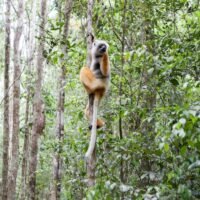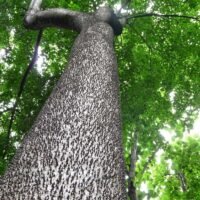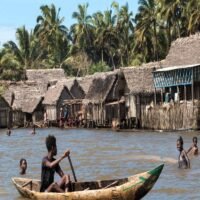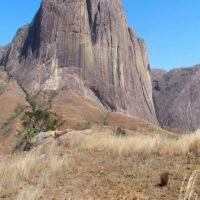Antananarivo, the capital of this magnificent country and of the Merina ethnic group, is a chaotic city with over 2 million inhabitants but, with a unique charm.
In 1610, King Adrianjaka manages to conquer the hill of Analamanga (where the Queen’s Palace is located) expelling the Vazimba tribe, one of the first tribes of the island. To defend himself from possible reprisals, the King creates an army of 1000 soldiers, thus giving the city its name, Antananarivo, “the city of a thousand warriors” in Malagasy.
The capital of Madagascar has nothing exotic about it, but it is the only city in the country where the buildings, steles and other monuments that represent the history of Madagascar are concentrated. However, the surroundings of Antananarivo really offer some spectacular visits to spend the whole day.
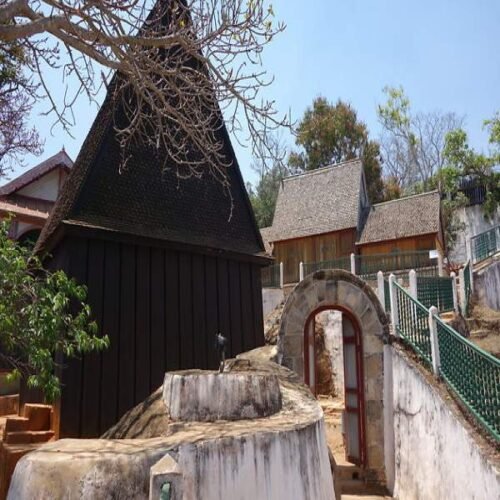
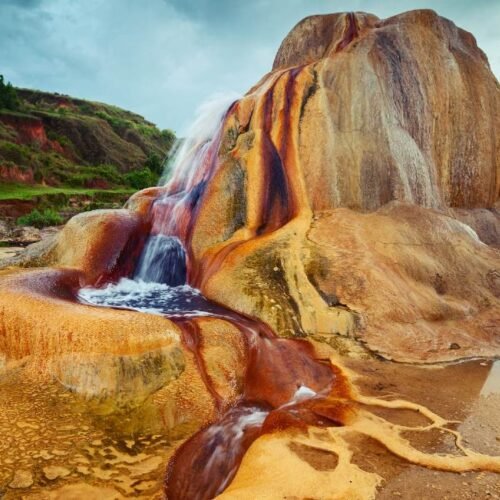
What to do in Antananarivo
Museums
Museum of Art and Archeology in Isoraka. The museum contains a collection of ethnographic and archaeological finds
Tsimbazaza Museum of Ethnology and Paleontology, inside the botanical and Zoological Park.
National Museum of Geology, located within the Department of Mines and Geology in Ampandrianomby
Center of Art and Archeology in the Rarihasina Analakely area
The Markets
During the time of the kings, there was a market in different places in the city every day of the week (except Sunday). This tradition continues today and you can find everything – fruit, vegetables, clothing, furniture and flea market. The major markets take place on Thursdays in Mahamasina and on Saturdays in Analakely.
Excursions from Antananarivo
Along the RN1 we find Ampefy and Lake Itasy, 90 km from the capital. Volcanic region classified as an ecotourism site. Lake Itasy is a great place to get out of the hustle and bustle of the capital but the Lily waterfall and the Ampefy geysers are even better. To see this area we recommend 2 days. On the RN1 road, just outside the capital, do not forget the Lemur Park, the perfect place if you only have the morning available.
To the east of the city on the RN2, on the Angavokely plateau, there is a small forest that offers excursions to the top of the massif, exploration of caves and the opportunity to admire over 100 types of orchids. Mantasoa Lake is also worth a visit where many activities such as pedal boating, fishing, water skiing and rowing can be done. It is also possible to find the remains of the first industrial complex created by Jean Laborde between 1837 and 1844. The complex of arms, fabric, furniture, soap and glass factories. For that just does not have the time available, if you leave at 5 in the morning you can visit the Andasibe National Park and return in the evenings at 19.
To the north, along the RN3 at 15 km, we find the hill of Ambohimanga (Ambohimanga Rova, one of the twelve sacred hills of the Merina). Here we find the remains of the royal city, also designated as a UNESCO World Cultural Heritage Site. The first king to be installed was Adriambelomasina in 1730, the grandfather of the first king of Madagascar, Andrianampoinimerina. For those with more time, approx. 90 km from the capital, Anjozorobe, located in a protected area that is excellent for botanists and birdwatchers. There are also lemurs and reptiles in the park.
To the north, about 80 km southeast of the capital (and 50 km southeast of Ambatolampy) we find Tsinjoarivo, an old royal palace (Rova), built in 1830, which was used as a holiday residence for three queens and three prime ministers. In the area we can also admire beautiful landscapes. La Rova is surrounded on three sides by the powerful Onive River, which forms spectacular cascades including Andriamamovoka and Ambavaloza. These waterfalls were the site’s initial attraction, and one of Queen Ranavalona I’s favorite pastimes was watching the cows thrown into the water by the impotent waterfall drown (very cruel we add).



